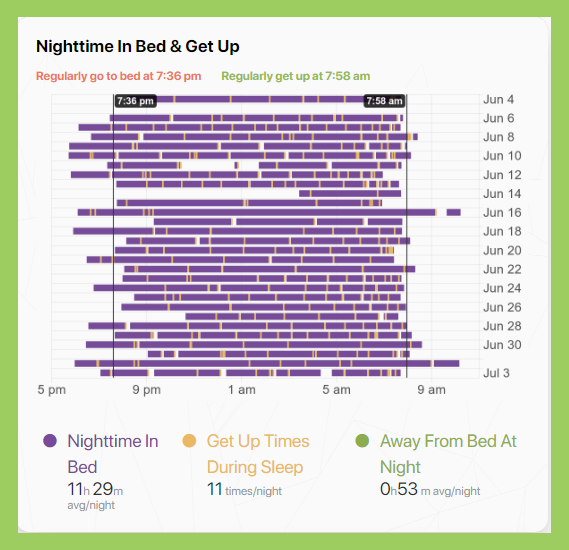Data driven evidence enabling new residents to transition sooner to Long Term Care (LTC)
Understanding new residents’ needs and establishing a baseline which took over a week now reduced to two days
Overview
Understanding new residents’ needs sooner increases success of residents’ transition
When a new resident moves into a long term care residence (LTC), staff at the residence often spend up to two weeks observing and getting to know the new resident in order to provide the best care. Evidence shows that the sooner a baseline can be established and new resident’s needs are understood, the higher the success rate of a positive transition to LTC.
Using the Sleepsense bed sensor, Langley Lodge, a LTC residence in British Columbia, Canada, was able to find out that a new resident was getting out of bed almost 20 times during the night to use the washroom. With this unbiased evidence care staff were then able to assess and identify the severity of the resident’s prostate condition and organize treatment within two days, something that would have previously taken more than a week based on in-person observations and anecdotal evidence.
Sleepsense reports (sleep scores, sleep efficiency, sleep pattern) are now part of Langley Lodge’s checklist of factors which include cognition & communication, behaviour, mobility, medication for all new residents. This checklist helps staff understand new residents and provide customized care for residents as soon as possible.
“With the data gathered from Sleepsense, I believe we are far better placed in ensuring safety and enhanced care in a more timely manner. Previously practices tried to accomplish this through a lot of guesswork, relying on the assessments of many people and often feel short”
Manager, Resident Care
Langley Lodge, BC

